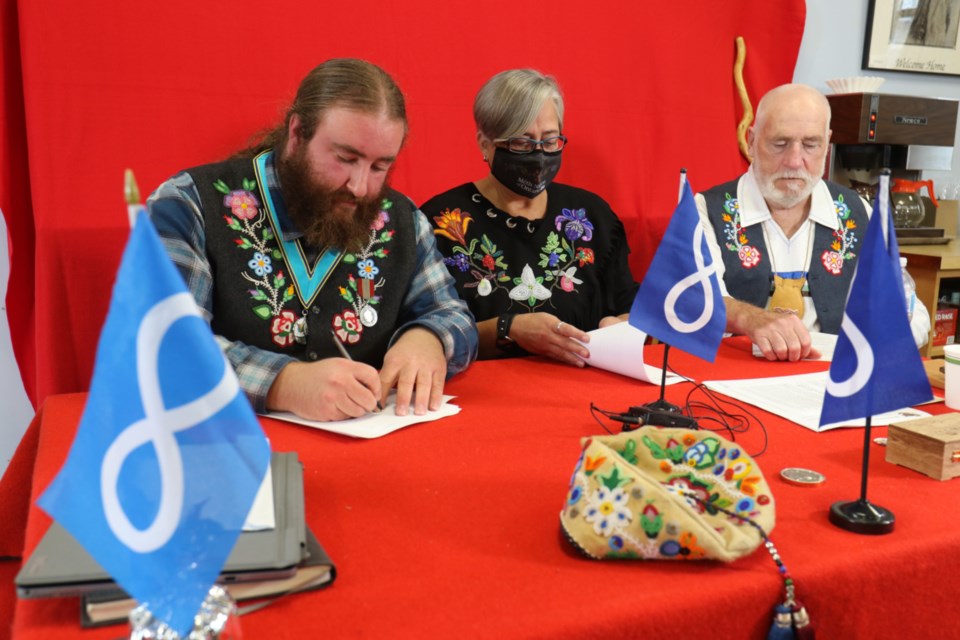The Métis Nation of Ontario is calling on the federal and provincial governments to develop and implement a lands claim process that would allow the Historic Sault Ste. Marie Métis Council to eventually be compensated for a three-mile tract of land along the St. Marys River in Sault Ste. Marie.
On Thursday, Mitch Case, Region 4 Councilor for the Provisional Council of the Métis Nation of Ontario, was joined by Métis Nation of Ontario President Margaret Froh to sign a letter asking Canada and Ontario for a formal land claims process. The letter will be sent to federal and provincial ministers Thursday.
“What we’re really asking for is a process. There needs to be a fair and transparent and properly-resourced process for us to sit down and talk about what that would mean,” Case said.
Oct. 21 marks the 171st anniversary of Treaty Commissioner William B. Robinson submitting his report and recommendations to the Crown, which included the promise to protect Métis lands that make up a portion of downtown Sault Ste. Marie.
The bell in the steeple of the former St. John’s Anglican Church in Sault Ste. Marie - which was gifted to Historic Sault Ste. Marie Métis Council in 2017 by the Anglican Church due to the existence of a Métis burial ground on the site - rang out 171 times Thursday, signifying the 171 years that the promise to protect Métis lands in Sault Ste. Marie has gone unfulfilled.
“This is a story of promises that were never kept by the Crown,” said Froh. “The Crown continued to do their work to pull resources out of these lands, to push settlement forward across these lands - and pushing the Métis off their lands and into the margins.”
Case said that the long, narrow river lots along the St. Marys River roughly stretched from the John Street area to present-day Bellevue Park, providing families with access to both the river and communal pasture lands. There were 54 heads of Métis families in Sault Ste. Marie that were accounted for in 1850, or roughly 400-500 people.
“Let’s get an economic assessment of what that would be, let’s talk about a process, whether it’s for monetary compensation, land-in-lieu-of, all those other sorts of things. Those are things that we’ll have to get to the table and talk about,” said Case, while taking questions from reporters Thursday. “I’m not a big fan of negotiating in public or whatever else, but that’s simply the reality - if the honour of the Crown means anything...we can’t be talking about a just society for some Aboriginal people, and not for others.”
“You can’t have a process that allows for First Nations and Inuit to have a fair, transparent and properly-resourced process, and Métis simply can’t apply because of a technicality created by Indian Affairs. It’s just simply wrong.”
Case expects to meet with Sault Ste. Marie MP Terry Sheehan within the next couple of weeks. The Historic Sault Ste. Marie Historic Métis Council has also reached out to Romano’s office. Meanwhile, a date is also being set up for a delegation to city council, Case said.
“It’s time. It’s time. Just do the right thing, come to the table and let’s work to resolve this together,” he said.
There are about 1,200 citizens in the Historic Sault Ste. Marie Métis Council, with another 350 in North Channel Métis Council, which stretches from the eastern boundaries of the Sault to Spanish, Ont.
